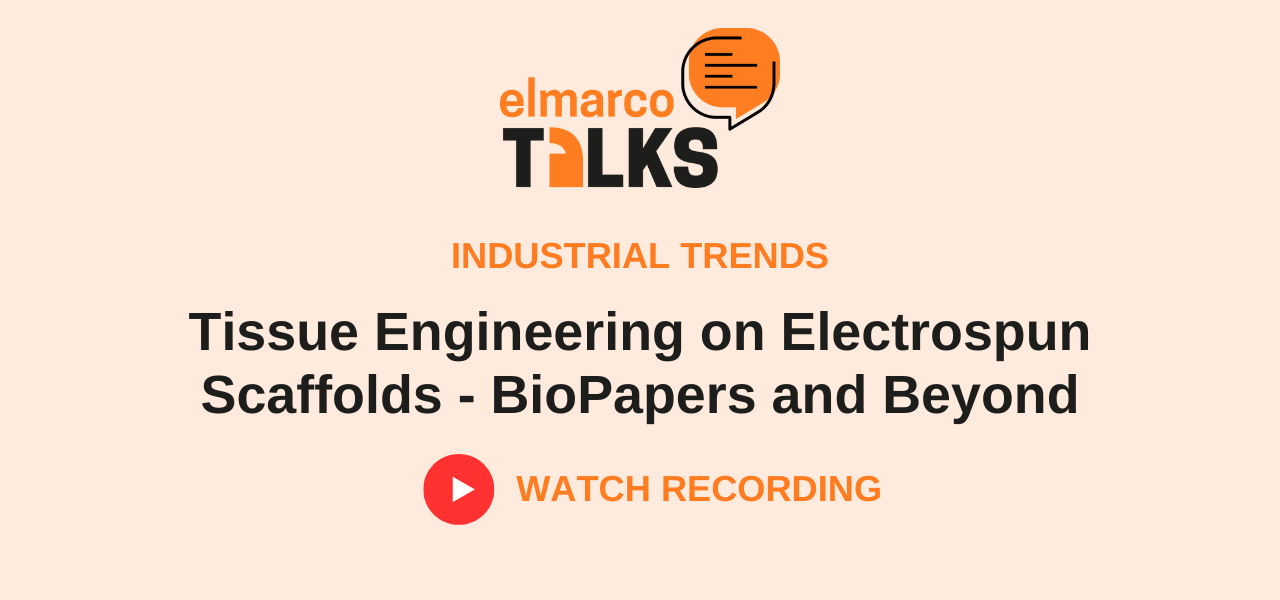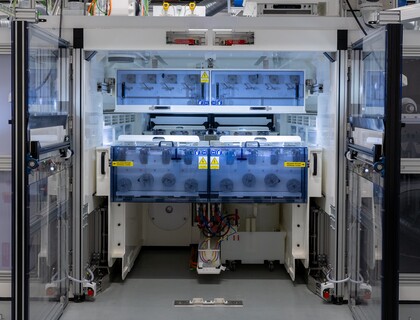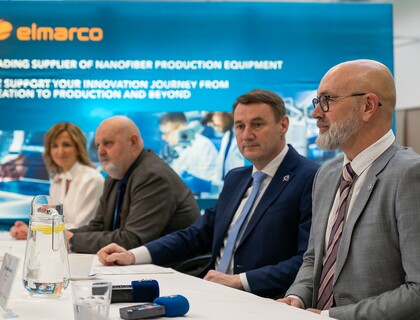
WEBINAR RECORDING: Tissue Engineering on Electrospun Scaffolds - BioPapers and Beyond

Join the next episode of Elmarco Talks and explore the exciting realm of biomedicine, focusing on the innovative application of nanofibers in this burgeoning field. Our upcoming webinar, titled 'Tissue Engineering on Electrospun Scaffolds - BioPapers and Beyond,' will be led by Dr. Stephen Farias and James Dolgin from Materic.
What will be discussed?
Electrospinning is a versatile tool used to produce highly customizable nonwoven nanofiber mats of various fiber diameters, pore sizes, and alignments. It is possible to create electrospun mats from synthetic polymers, biobased polymers, and combinations thereof. The post‑processing of the end products can occur in many ways, such as cross‑linking, enzyme linking, and thermal curing, to achieve enhanced chemical and physical properties. Such multi‑factor tunability is very promising in applications such as tissue engineering, 3D organs/organoids, and cell differentiation.
While the established methods involve the use of soluble small molecules, growth factors, stereolithography, and micro‑patterning, electrospinning involves an inexpensive, labor un‑intensive, and highly scalable approach to using environmental cues, to promote and guide cell proliferation, migration, and differentiation.
By influencing cell morphology, mechanosensing, and intracellular communication, nanofibers can affect the fate of cells in a multitude of ways. Ultimately, nanofibers may have the potential to precisely form whole organs for tissue engineering, regenerative medicine, and cellular agriculture, as well as to create in vitro microenvironments.
In this review, the focus will be on the mechanical and physical characteristics such as porosity, fiber diameter, crystallinity, mechanical strength, alignment, and topography of the nanofiber scaffolds, and the impact on cell proliferation, migration, and differentiation.
About the speakers
 Dr. Stephen Farias (Materic)
Dr. Stephen Farias (Materic)
Chief Science Officer, Materic – Dr. Farias has a Ph.D. in materials science and engineering and over a decade of experience in research and industry. He has technical expertise in nanoparticle synthesis, composite fabrication, and electrospinning, as well as materials characterization. He has also led the development and commercialization of multiple novel materials solutions, from lab- to commercial‑scale. He helps lead the technical development of functional materials for Materic clients.
 James Dolgin (Materic)
James Dolgin (Materic)
James Dolgin worked with Materic for three and a half years developing nanofiber materials for tissue engineering, medical devices, and drug delivery applications. He graduated with a bachelor's degree in Polymer Science and Engineering from Case Western Reserve University and is currently pursuing a PhD in Biomedical Engineering at Tufts University, where his research focuses on developing sustainable ingredients and scaffolding materials for the field of cultivated meat.
While at Materic, James worked closely with industry clients and academic partners to optimize Materic's BioPaper nanofiber cell scaffolds, as well as other custom products in the medical, textile, and air filtration spaces. He outlines the potential benefits of nanofibers in tissue engineering applications in his recent publication Mechanical Properties and Morphological Alterations in Fiber‑Based Scaffolds Affecting Tissue Engineering Outcomes, a collaborative research effort between Materic, Michigan Technological University, and NIST.
About Materic
Materic owns and operates companies for specific, difficult to solve, solutions in the materials space. Materic applies its expertise to internal product lines as well as taking on custom manufacturing projects for our customers worldwide. Materic custom designs and manufactures advanced materials from ideation to scale‑up.
More info:


